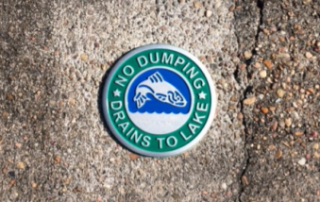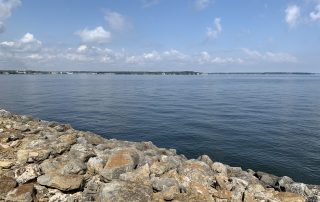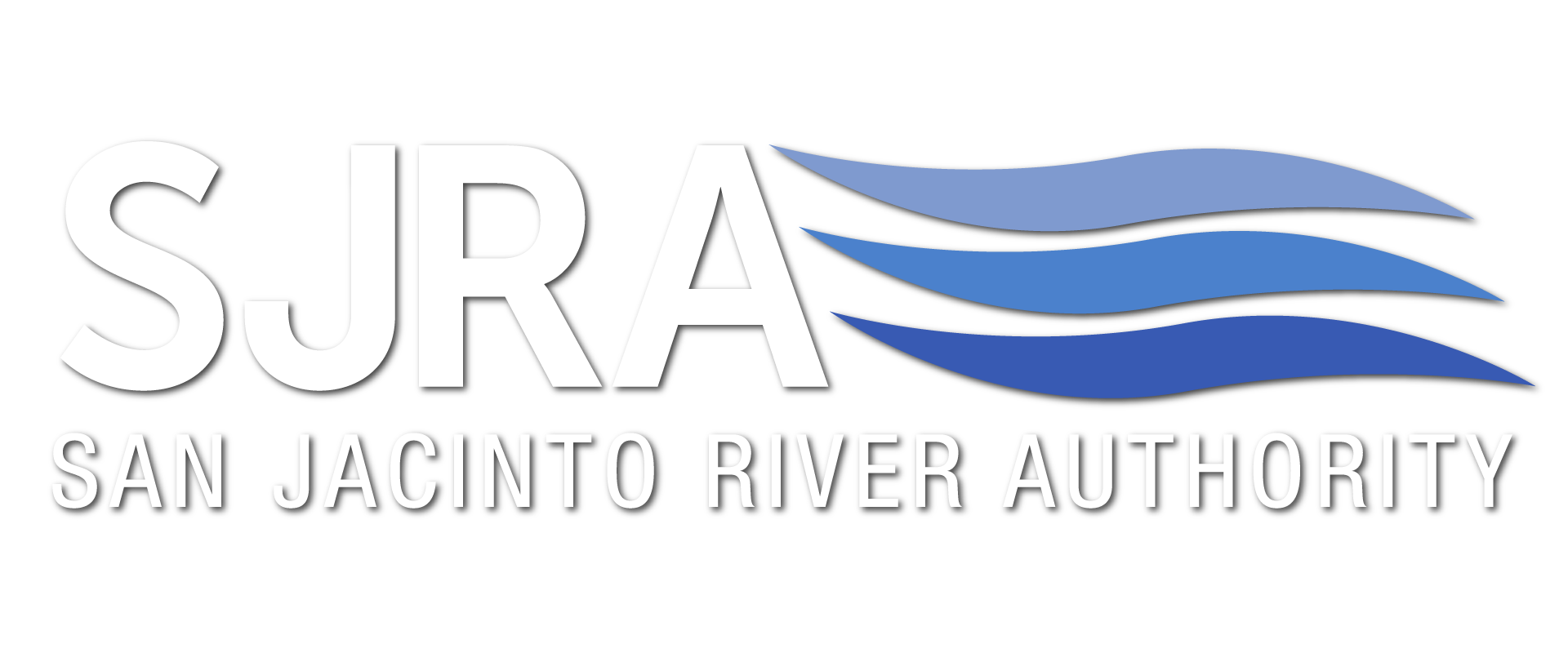In May 2015, the San Jacinto River Authority (SJRA) completed a comprehensive Watershed Protection Plan (WPP) for the Lake Conroe watershed. The WPP focuses on monitoring the water quality in Lake Conroe, reducing issues that could result from future growth and other activities in the watershed, as well as educating the public about water quality and how they can improve the already excellent water quality in Lake Conroe. Since the public’s actions heavily influence the water quality of the lake, it was important to utilize this WPP as a way to effectively communicate to the public how they can positively impact their water quality.
Lake Conroe is one of the highest quality bodies of water in the greater Houston area. Lake Conroe meets all Clean Water Act standards for contact recreation, public water supply, and aquatic habitat.
Part of SJRA’s WPP, the Stormwater Inlet Marking (SwIM) Program is a nationwide effort to educate the public about the effects of stormwater runoff from neighborhood streets and lawns on water quality. The SwIM Program is an entirely volunteer program to help engage local citizens in maintaining the high water quality of Lake Conroe.
The goal of the SwIM Program is to prevent stormwater from carrying pollution to bodies of water. Some of the measures that help ensure the public is active in keeping the water quality high are: proper removal of pet waste, trash pick-up, suitable chemical disposal, and accurate fertilizer application. Many people mistakenly believe that the water going into the stormwater inlets gets filtered at some point before entering the waterbodies. The SwIM program serves as a reminder that what enters the stormwater inlet goes directly into Lake Conroe without being filtered or treated.
Volunteers can go on the SJRA website to fill out the application to be a part of the SwIM Program. Volunteers are given a testing kit that includes a 5 gallon bucket, wire brush, adhesive, metal medallions, safety vests, safety cones, safety glasses, gloves, and door hangers. The program also uses a GIS app called “Collector” that volunteers can download to show areas that still need to be tested. Prior to installing the medallions on the stormwater inlets, volunteers pass out door hangers to the homes in their project area. The door hanger serves as a notification that the SwIM Program installation will occur in the project area in the near future and provides educational information on watershed protection and water quality.
Another way SJRA assures Lake Conroe exceeds quality standards, is to follow quality guidelines set forth in the Clean Rivers Program. The Clean Rivers Program is a statewide program that declared all bodies of water need to be tested for quality. The program sets standards that have to be met for each body of water depending on the purpose of the body of water. Lake Conroe meets every category of usage, so it is required to meet the highest standards. To achieve the program’s standards, SJRA encourages participation in an additional volunteer program for citizens called the Texas Stream Team, which is put together through Texas State University and TCEQ. Stream Team participants attend classes to learn how to sample and test water at their designated site. Samples are taken monthly and analyzed If the water quality of a body of water isn’t met—whether because of pollutants or other sources–measures have to be taken to restore normal water quality. SJRA’s goal is to train citizens through these volunteer programs to become water quality samplers and stay aware of any potential pollution sources at Lake Conroe. To find more information on SJRA’s SwIM program, please visit https://www.sjra.net/lakeconroe/stormwater-inlet-marking/.
One of the major river authorities in Texas, SJRA’s mission is to develop, conserve, and protect the water resources of the San Jacinto River basin. Covering all or part of seven counties, the organization’s jurisdiction includes the entire San Jacinto River watershed, excluding Harris County. For additional information on SJRA visit our website at www.sjra.net, like SJRA on Facebook @SanJacintoRiverAuthority, follow us on Twitter @SJRA_1937, find us on Instagram @sanjacintoriverauthoritySJRA, or connect with us on LinkedIn @San Jacinto River Authority.



